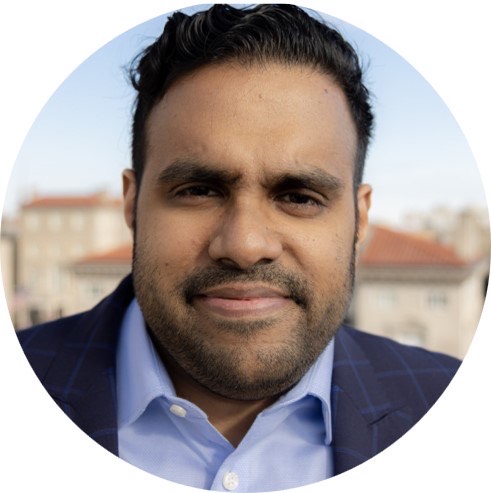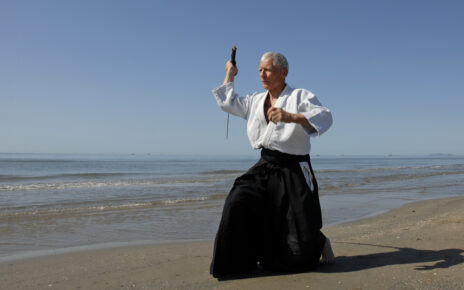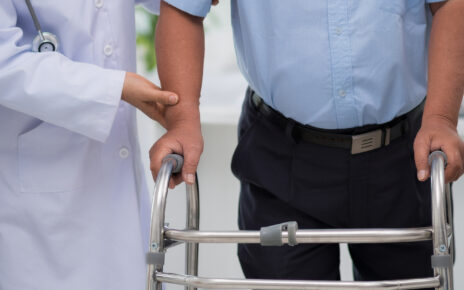While many are familiar with AARP’s work in their communities and across the United States, some may be surprised to learn that AARP has a robust international presence. We chatted with Dr. Vijeth Iyengar – AARP’s Director of Global Aging – on issues around global aging.
Tell us about the primary goals of AARP International.
 Inspired by our founder’s oft-cited quote of, “What we do for one, we do for all” – and shaped by the vision from senior leadership – AARP’s Office of International Affairs (or AARP International) seeks to help people live longer, healthier, more financially secure and productive lives and in-so doing, works on behalf of older adults everywhere.
Inspired by our founder’s oft-cited quote of, “What we do for one, we do for all” – and shaped by the vision from senior leadership – AARP’s Office of International Affairs (or AARP International) seeks to help people live longer, healthier, more financially secure and productive lives and in-so doing, works on behalf of older adults everywhere.
We accomplish this goal in a few ways: 1.) Serving as a tireless advocate on behalf of older adults in international fora including the United Nations (UN) and the World Health Organization (WHO) 2.) By producing thought leadership on issue areas ranging from age discrimination and the value of the older adult worker, to low-and-no cost healthcare innovations among others 3.) By identifying promising models and practices from other countries, and 4.) Convening global experts on topics of global relevance.
Can you talk about any current initiatives that you’re excited to work on?
The Aging Readiness and Competitiveness (ARC) Initiative, which was first launched in 2017, maps out how countries around the world are responding to the pressures and opportunities created by their aging populations. The ARC seeks to identify promising practices, emerging models, and innovations that promise a more active, engaged, and productive aging population. In the fall of 2022 we will be releasing the fourth edition of AARP’s Aging Readiness and Competitiveness Report, which examines the factors compounding or curtailing inequities among older adults in representative low- and middle-income countries including Bolivia, Colombia, Ghana, India, Jamaica, Malawi, Thailand, and Vietnam.
To address the barriers in consumption of digital services contributing to digital inequities, AARP has partnered with the Office of the Secretary-General’s Envoy for Technology at the UN to establish a Network for the Digital Inclusion of Older Persons to take a deeper look at the issues of age-inclusive design, broadband access, and digital literacy – and to identify promising ideas and practices to advance digital equity more broadly.
In advancing understanding and knowledge of healthy aging, we have supported the June 2022 publication of the United States National Academy of Medicine Global Roadmap for Healthy Longevity report which serves as a tool for stakeholders to improve healthy longevity by 2050. In that same month – in partnership with Foreign Policy Analytics – we published the Database of Action Plans on Aging, a compilation of national and subnational-level plans – including California’s Master Plan for Aging – intended to provide policymakers and experts around the world with resources to inform the robust development of policies and plans to support their aging populations. We hope to build out this database in the months and years to come.
Has the definition of healthy aging changed since COVID-19?
In December 2020, the UN General Assembly adopted a resolution for the UN Decade of Healthy Ageing (2021-2030). The Decade seeks to galvanize global action by bringing together disparate stakeholders with the goal of working towards improving the lives of older adults and their families. At the core of the Decade of Healthy Ageing are four Action Areas essential to meeting this goal: 1.) Fostering age-friendly environments 2.) Combating ageism 3.) Facilitating integrated care, and 4.) Expanding long-term care.
These four action areas provide local communities, cities, and countries the building blocks to ensure individuals can lead long, healthy, and productive lives as they age. And while COVID-19 has not significantly changed the goals of each action area, the pandemic has certainly underscored their importance. From the rise of ageism and age-discrimination and breakdowns in quality of long-term care facilities to the ballooning adoption of technology-enabled services and products by the 50+ population, a potential silver lining from the pandemic has been an all-of-society recognition of the omnipresence of inequities and concerted efforts to tackle underlying disparities – including those arising from the digital divide – to ensure equitable aging for older adults everywhere.
Can you share a few examples of different countries that do “healthy aging” right? What lessons can we learn?
In the third edition of the ARC, AARP partnered with the Economist Impact to highlight innovations and promising practices enabling a healthier and more equitable future for older adults.
Two examples I want to highlight: 1.) To boost access to care for older adults residing the rural and mountainous areas of the European Alps, the CoNSENSo (COmmunity Nurse Supporting Elderly iN a changing SOciety) pilot program was developed. This pilot brought together partners from multiple countries – including Austria, France, Italy, and Slovenia – to train family community nurses to serve in these remote regions and lead health promotion activities. 2.) In seeking to address the rise in loneliness and social isolation amid the pandemic, the Peruvian government set up a volunteer program – supported by the UN Volunteers program – to check-in on high-risk older adults, administer over-the-phone physical and mental wellbeing assessments, and ensure needs were being met.
Innovations can come from anywhere and what works in rural, hard-to-reach parts of the European Alps may bear promise in say, rural Appalachia. Put more simply is the AARP International belief that: “Good ideas have no borders.”
What is the “longevity economy” – and what is the role of employers?
As the number of people aged 50 years and older continues to rise, the economic and social impact of this group will grow in influence. The contributions of the 50-and-over age group is referred to as the Longevity Economy. It is critical to work with global employers to ensure individuals remain employable throughout their lives, advocate for policies preventing age-discrimination, and provide for workers to remain and grow while on the job.
To meet this moment, AARP – in partnership with the World Economic Forum and the OECD – launched the Living, Learning, and Earning Longer Collaborative (LLEL). This collaborative – which counts more than 70 global companies as members – brings together employers for an open dialogue focused on issues such as supporting the multigenerational workforce, retaining talent of all ages, and the changing labor market.
The private sector can play a role in meeting the workforce needs of an increasingly aging population. We call on readers who are part of-or-represent employers to consider joining the LLEL collaborative and explore new ways to nurture an increasingly multigenerational workforce.
Dr. Iyengar joined AARP International in January 2022 after five years in the U.S. Federal Government, during which time he completed stints at the Department of Health and Human Services, the World Health Organization’s Regional Office for the Americas, and the White House Office of Science and Technology Policy. To learn more about AARP International visit aarpinternational.org




